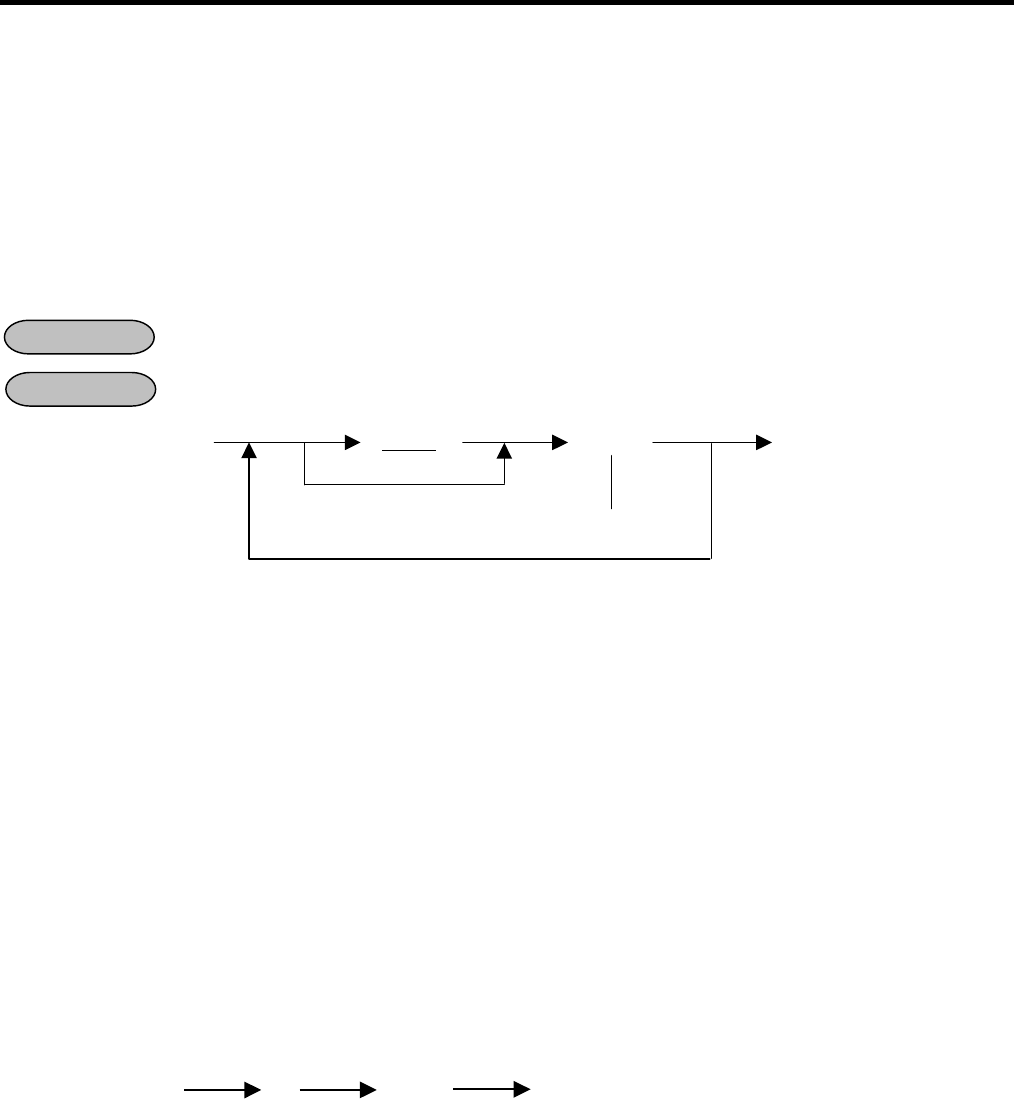
6. TERMINAL FILE PROGRAMMING
EO3-11106
6.4 SFKC (Selective Function Key Code) Programming
6-14
6.4 SFKC (Selective Function Key Code) Programming
SFKC Programming is to determine the keyboard layout with the required keys. This operation must be
performed first before any other programming operation. If the RAM Clear is performed prior to the SFKC
programming, program only the keys that require changes from the SFKC in the Standard Keyboard which has
been set by the RAM Clear operation automatically. (For the Standard Keyboard, see Page 6-17.)
The following keys that are minimum requirements for programming and registering operations must be assigned
to the keyboard no matter what any other keys may or may not be assigned:
[C], [X], [ST], [AT/TL], [#], and Department Keys or [DP#]
After all Z and GTZ reports, or after RAM Clear, DATA Clear, or STATUS Clear
Mode Lock: BLIND
76 [AT/TL] | SFKC
| [KEY] [AT/TL]
Repeat
1. Enter 76, and depress the key to be [AT/TL] (Cash Media key). This declares the SFKC Programming Start
and at the same time sets the SFKC 76 on the key.
From this step on, the depressed key will be [AT/TL].
2. Enter the SFKC (see the SFKC table on the following pages), and depress the key that requires the key name
of the SFKC. Repeat this step until all the necessary keys are set with their own SFKC’s. Each key on the
keyboard must correspond to one SFKC, except for SFKC 96 (PLU Preset-code Keys). If in this step, a key is
simply depressed without a prior SFKC entry, the SFKC that has been pre-programmed on that key is
displayed at that Amount portion.
3. Depress the [AT/TL] key (the key set as [AT/TL] in Step 1) to end the SFKC programming operation. The
display now shows “0” at the Amount portion. A receipt is issued.
NOTES:
1. The entered SFKC is displayed at the Amount portion of the display.
2. If a wrong code has been entered and the key has also been depressed (i.e. a wrong SFKC has been set on
a key), enter the correct SFKC and depress the key.
3. If “0” is entered as SFKC, the key will be dead and its memory will also be closed.
76 [AT/TL] 0 [KEY] [AT/TL]
4. Each of the keys programmed in this step will have its memory (if any) opened automatically.
5. The [C] key, if once set with SFKC 95, may be used to clear an error, but not to clear and SFKC entry. If
any SFKC is entered and the [C] key is depressed, that SFKC will be set on the key that was once the [C]
key.
6. To designate the SFKC 100, operate the keys [1] → [0] → [0]. In this case, the [00] key is unavailable.
7. When a key is opened here, the print status should be set to its memory in Report Item Print/Non-Print
Setting.
8. The [RF], [JF], [00], and [ . ] keys can also be programmed by the SFKC programming operation.
9. If [RF] and [JF] are programmed on several keys, that with largest key location code is effective. The
remaining [RF] and [JF] keys are ignored. (Only one them are operable each.)
10. The location of the [AT/TL] key is fixed.
OPERATION
CONDITION
The key that requires the
function of the SFKC
to read preset SFKC


















